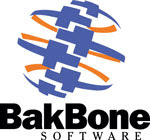 IBM has today announced the availability of an open beta version of its virtual Linux environment to enable x86 Linux applications to run without modification on POWER processor-based IBM System p servers. Designed to reduce power, cooling and space by consolidating x86 Linux workloads on System p servers, it will eventually be released as the roles off the tongue ‘IBM System p Application Virtual Environment (System p AVE).’
IBM has today announced the availability of an open beta version of its virtual Linux environment to enable x86 Linux applications to run without modification on POWER processor-based IBM System p servers. Designed to reduce power, cooling and space by consolidating x86 Linux workloads on System p servers, it will eventually be released as the roles off the tongue ‘IBM System p Application Virtual Environment (System p AVE).’With a 31.5% global revenue share during 2006, IBM hopes to build on System p UNIX success and extend firmly into the Linux marketplace. Considering there are almost 2,800 applications that already run natively on Linux on System p servers, the chances are good that it will succeed. System p AVE will allow most x86 Linux binaries to run unmodified as well, which will expand the x86 workloads that can be moved to a System p server. Everyone wants to get more out of their investment in IT, and moving Linux workloads to virtual server environments that allow the consolidation of multiple servers onto a single platform is a great way of achieving that aim. But a systems approach that maximizes system resource utilization, manageability and flexibility as well as provides ‘no excuses’ reliability and scalability is needed.
“System p customers have told me that technology that may have been 'good enough' for deploying one x86 server at a time is not 'good enough' when consolidating over 300 x86 servers spanning eight racks onto one rack of more powerful System p servers," Scott Handy, vice president, worldwide marketing and strategy, IBM System p told DaniWeb "these customers are choosing to trust System p products and our Advanced POWER Virtualization for those more mission critical points of consolidation and p AVE will expand the possibilities of what x86 workloads they can consolidate onto System p platforms to derive greater savings."
So what exactly is IBM System p AVE technology in a nutshell? Initial testing shows that clients should be able to easily install and run a wide range of x86 Linux applications on System p and BladeCenter JS20 and JS21 servers that are using a Linux operating system. These applications should run, without any change to the application and without having to predefine that application to the Linux on POWER operating system with p AVE installed. The system will "just know" the application is a Linux x86 binary at runtime and run it automatically in a p AVE environment. Behind the scenes, p AVE creates a virtual x86 environment and file structure, and executes x86 Linux applications by dynamically translating and mapping x86 instructions and system calls to a POWER Architecture processor-based system. It uses caching to optimize performance, so an application's performance can actually increase the longer it runs. Using p AVE, IBM expects ISVs that don't already have a native Linux on POWER product to be able to expand their addressable market to System p servers at minimal cost by allowing them to run their existing x86 Linux applications on these servers without having to recompile, release new media or documentation, or maintain a unique product offering for POWER technology.
IBM intends to leverage its successful Chiphopper program to help those ISVs support System p servers with the x86 Linux version of their application.
Thos story was origanally done by Bill Andad from daniweb.com








